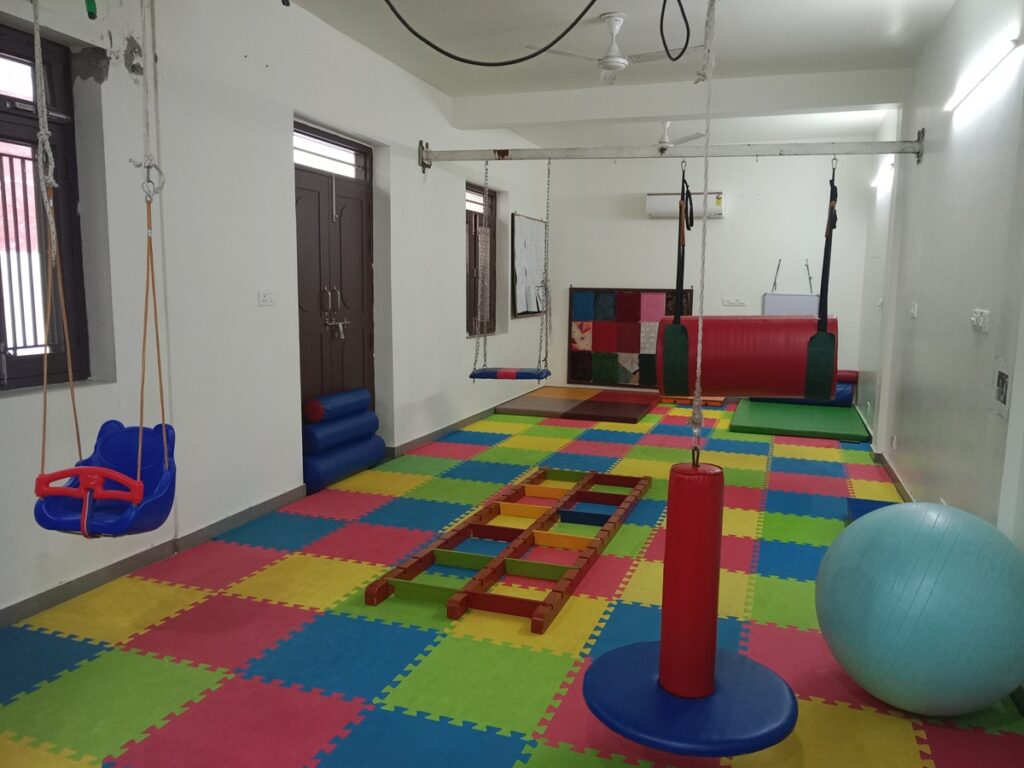
Occupational Therapy
Occupational therapists, commonly referred to as OTs, work with individuals who are experiencing physical, cognitive, developmental, or emotional challenges that interfere with their ability to engage in these meaningful activities.
Occupational therapists work with individuals who may have various conditions, such as physical disabilities, mental health issues, developmental disorders or injuries.
The primary goal of occupational therapy is to enable individuals to live life to the fullest by promoting independence, improving functional abilities, and enhancing overall quality of life. OTs take a holistic approach to therapy, considering the physical, psychological, social, and environmental factors that influence an individual’s ability to participate in daily activities. They work closely with clients to assess their strengths, challenges, and goals, and then develop personalized treatment plans to address their unique needs.
1.Comprehensive Assessment: Occupational therapists conduct a thorough evaluation of the individual’s physical, cognitive, and emotional capabilities, as well as their specific challenges and goals.
2.Goal Setting: Collaboratively setting clear and achievable goals with the client and their caregivers is a fundamental part of OT. These goals focus on enhancing the individual’s independence and quality of life.
3.Customized Intervention Plan: Occupational therapists design a tailored intervention plan that includes various therapeutic activities and exercises to address the identified challenges.
4.Activities of Daily Living (ADL) Training: OT helps individuals improve their ability to perform everyday tasks, such as dressing, grooming, bathing, cooking, and mobility. This may involve learning new techniques, using assistive devices, or making environmental modifications.
5.Hand Therapy: For individuals with hand and upper extremity injuries or conditions, OT may include specialized hand therapy to improve dexterity, strength, and coordination.
6.Sensory Integration: OT can provide sensory integration therapy to help individuals better process and respond to sensory information, especially beneficial for those with sensory processing disorders.
7.Cognitive Rehabilitation: For individuals with cognitive impairments, such as brain injuries, OT can include exercises to improve memory, problem-solving, and executive functioning.
8.Pediatric Development: In the case of children, OT focuses on developing essential skills for school, play, and daily life activities.
9.Equipment and Assistive Devices: Occupational therapists may recommend and help individuals obtain assistive devices or adaptive equipment to enhance independence.
10.Environmental Modifications: Modifying the individual’s home or workplace environment to make it more accessible and supportive is often part of OT.
11.Patient and Caregiver Education: OT includes educating both the individual and their caregivers to ensure continued progress and consistent support.
12.Progress Monitoring: Regular assessment of progress and necessary adjustments to the treatment plan to meet changing needs and goals.
Occupational therapy is beneficial for a wide range of individuals, including those with physical disabilities, developmental disorders, mental health conditions, and aging-related challenges. The primary objective is to empower individuals to participate in activities that are meaningful to them, enhance their overall well-being, and promote independence in daily life.
Occupational therapists work with individuals who may have various conditions, such as physical disabilities, mental health issues, developmental disorders or injuries.
The primary goal of occupational therapy is to enable individuals to live life to the fullest by promoting independence, improving functional abilities, and enhancing overall quality of life. OTs take a holistic approach to therapy, considering the physical, psychological, social, and environmental factors that influence an individual’s ability to participate in daily activities. They work closely with clients to assess their strengths, challenges, and goals, and then develop personalized treatment plans to address their unique needs.
Comprehensive Assessment: Occupational therapists conduct a thorough evaluation of the individual’s physical, cognitive, and emotional capabilities, as well as their specific challenges and goals.
Goal Setting: Collaboratively setting clear and achievable goals with the client and their caregivers is a fundamental part of OT. These goals focus on enhancing the individual’s independence and quality of life.
Customized Intervention Plan: Occupational therapists design a tailored intervention plan that includes various therapeutic activities and exercises to address the identified challenges.
Activities of Daily Living (ADL) Training: OT helps individuals improve their ability to perform everyday tasks, such as dressing, grooming, bathing, cooking, and mobility. This may involve learning new techniques, using assistive devices, or making environmental modifications.
Hand Therapy: For individuals with hand and upper extremity injuries or conditions, OT may include specialized hand therapy to improve dexterity, strength, and coordination.
Sensory Integration: OT can provide sensory integration therapy to help individuals better process and respond to sensory information, especially beneficial for those with sensory processing disorders.
Cognitive Rehabilitation: For individuals with cognitive impairments, such as brain injuries, OT can include exercises to improve memory, problem-solving, and executive functioning.
Pediatric Development: In the case of children, OT focuses on developing essential skills for school, play, and daily life activities.
Equipment and Assistive Devices: Occupational therapists may recommend and help individuals obtain assistive devices or adaptive equipment to enhance independence.
Environmental Modifications: Modifying the individual’s home or workplace environment to make it more accessible and supportive is often part of OT.
Patient and Caregiver Education: OT includes educating both the individual and their caregivers to ensure continued progress and consistent support.
Progress Monitoring: Regular assessment of progress and necessary adjustments to the treatment plan to meet changing needs and goals.
Occupational therapy is beneficial for a wide range of individuals, including those with physical disabilities, developmental disorders, mental health conditions, and aging-related challenges. The primary objective is to empower individuals to participate in activities that are meaningful to them, enhance their overall well-being, and promote independence in daily life.







